Key takeaways
- Landscape photography is about capturing emotional moments and the stories within the scenery, requiring patience and a deep understanding of light and composition.
- Preparation for shooting in environments like Joshua Tree includes being physically, mentally, and technically ready to adapt to the changing conditions of the landscape.
- Utilizing the right equipment, such as a sturdy DSLR, tripod, and various lenses, enhances the ability to capture the unique beauty and emotions of the desert.
- Mastering techniques like long exposures, composition, and adapting to different lighting conditions can transform ordinary landscapes into extraordinary images.
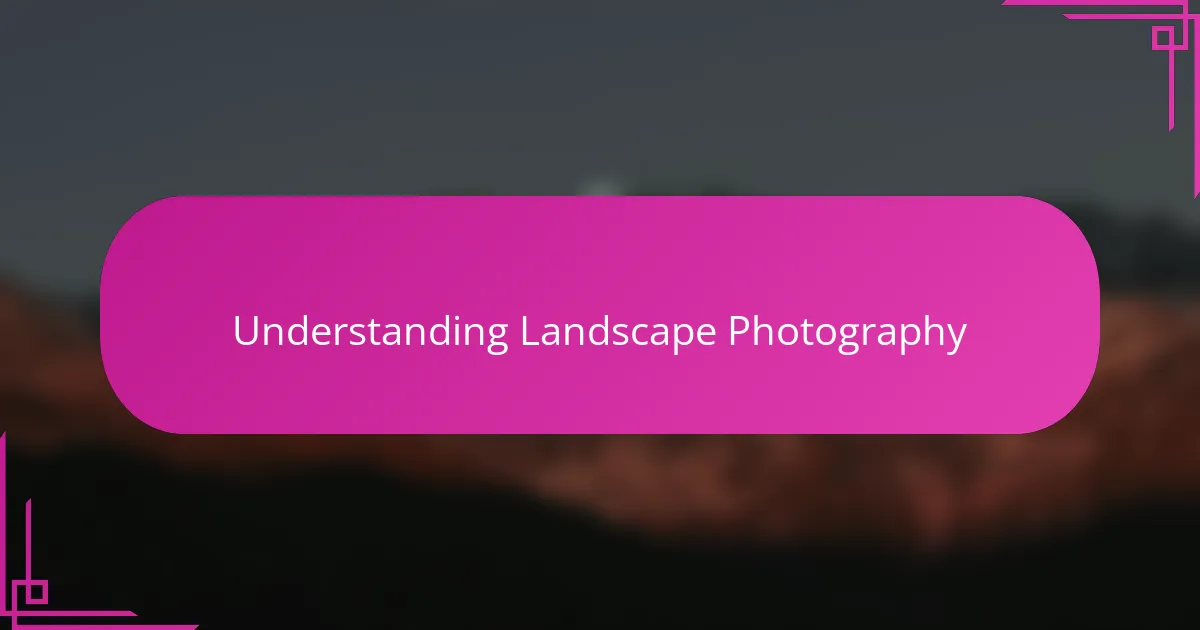
Understanding Landscape Photography
Landscape photography, to me, is more than just pointing a camera at a beautiful scene. It’s about capturing the essence of a moment and the story the land is quietly telling. Have you ever stood still in a vast open space and felt a deep connection to it? That feeling is what I strive to translate into my images.
I’ve learned that understanding light and composition is crucial, but equally important is patience. Sometimes, the perfect shot doesn’t happen instantly—it unfolds slowly as shadows shift or clouds drift by. This patience often allows me to see details that others might miss, making the photograph more meaningful.
Why does a particular landscape move us? For me, it’s the mix of unpredictability and timelessness. Joshua Tree, for example, holds secrets in every crevice, and understanding these subtle stories helps me frame shots that invite viewers to pause and feel something real. It’s this emotional layer that transforms a simple photo into a powerful landscape image.
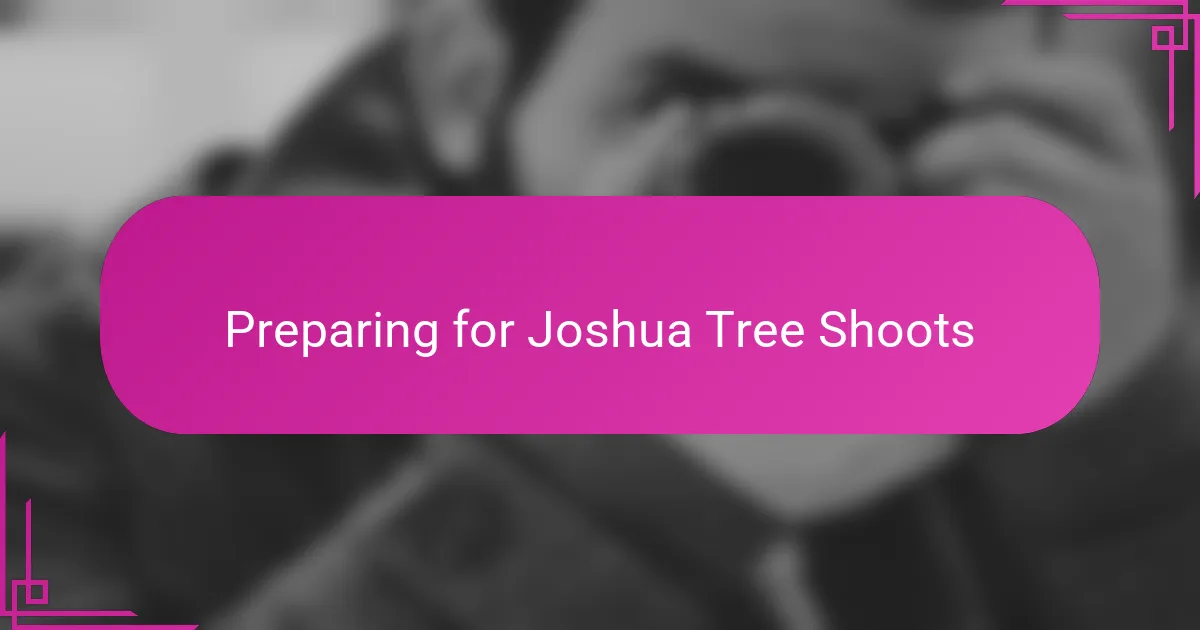
Preparing for Joshua Tree Shoots
Preparing for a shoot in Joshua Tree always starts with getting to know the environment beyond just maps and weather reports. Have you ever tried to capture a scene only to realize later that you missed the light changing because you weren’t physically or mentally ready? I’ve been there, and it taught me that preparation means syncing myself with the rhythms of the desert—the way the sun climbs and falls, how the wind whispers through the Joshua trees, and how the landscape transforms throughout the day.
Packing gear for Joshua Tree isn’t just about bringing the right lenses or enough batteries; it’s also about anticipating the unexpected. On one shoot, I underestimated how quickly the temperature would drop after sunset and regretted not layering up. Now, I always prepare for extremes, both in terms of comfort and technical needs, so I can focus entirely on capturing those fleeting moments without distraction.
Lastly, I find mental preparation just as vital as physical readiness. Before stepping into the desert, I try to clear my mind from the noise of daily life and tune into the stillness around me. Have you ever noticed how being fully present changes the way you see a scene? That mindfulness opens me up to creative possibilities I wouldn’t have noticed otherwise—it’s like the desert starts speaking directly to my camera.
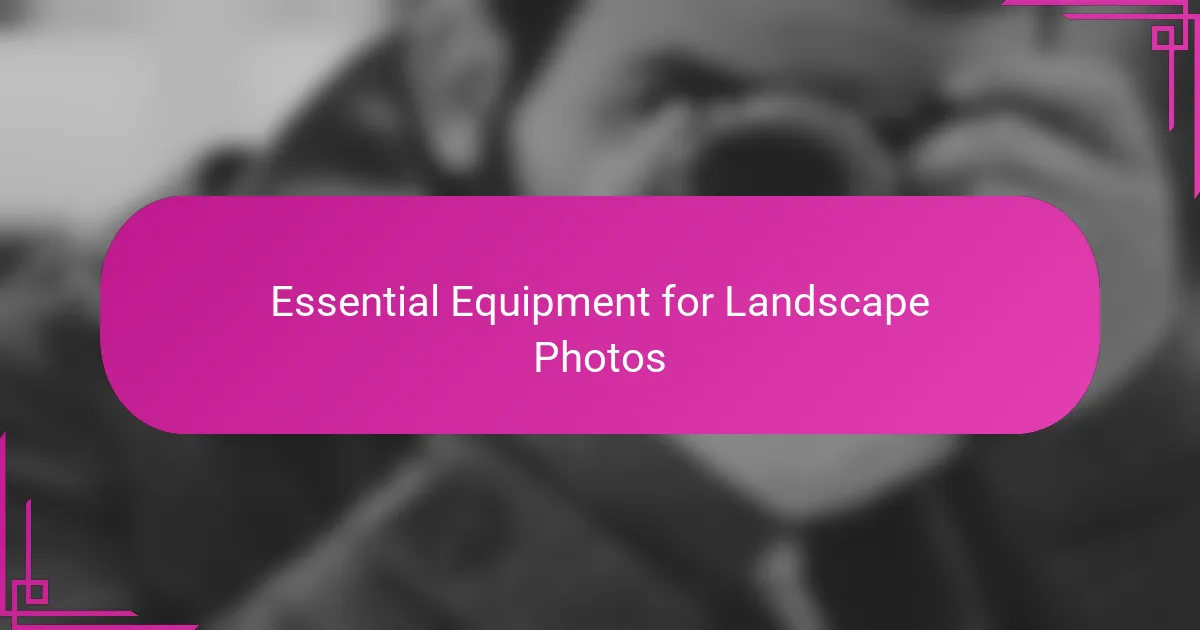
Essential Equipment for Landscape Photos
When I head out to Joshua Tree, my camera is always my closest companion, but it’s not just any camera—it’s a sturdy DSLR that handles the harsh desert conditions and offers full manual control. Have you ever tried to rely on automatic modes only to realize your photo missed the magic of the moment? Manual settings let me play with exposure, aperture, and shutter speed to capture the landscape’s mood just right.
A tripod is another piece of gear I can’t live without. It might seem basic, but in the shifting light of Joshua Tree, keeping the camera steady for long exposures is crucial. Sometimes, I find myself waiting in near silence for the last beams of sunset to hit a rock formation perfectly—and without a tripod, that moment would be blurry or lost altogether.
Lenses matter just as much as bodies for me. I usually pack a wide-angle lens to embrace the vastness of the desert and a mid-range zoom to highlight textures and patterns close up. Each lens unlocks a different way to see Joshua Tree’s beauty, and I love how switching them feels like changing my perspective entirely. Do you ever find that a particular lens transforms how you connect with a scene? For me, it’s the difference between capturing a place and capturing an experience.

Choosing the Best Locations in Joshua Tree
Choosing the best locations in Joshua Tree always starts with wandering off the beaten path. Have you ever stumbled upon a quiet nook where the light hits the rocks just right or where a lone Joshua tree stands like a silent guardian? Those hidden spots often hold more character than the popular viewpoints and give me a sense of discovery that breathes life into my images.
I remember one afternoon hiking toward a less-traveled ridge just before sunset. The vast sky turned shades of pink and orange, casting long shadows over twisted branches and rugged boulders. That spot wasn’t on any map, but it quickly became my favorite frame of Joshua Tree’s raw beauty. Choosing locations like that feels like having a private conversation with the desert.
Of course, sometimes the iconic places are iconic for a reason—they offer epic vistas that are hard to beat. But even there, I try to find angles that tell a different story or capture the unique mood of the moment. How often have you returned to a well-known site and seen it in an entirely new light? That’s the magic of Joshua Tree’s landscape—it reveals itself differently depending on where and when you stand with your camera.
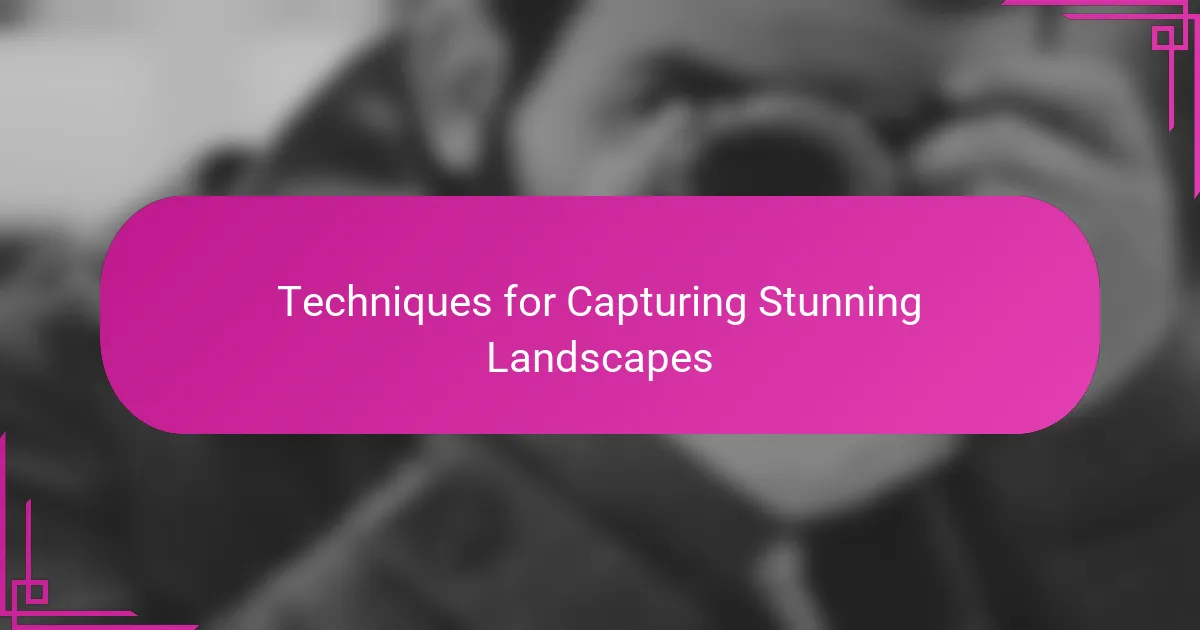
Techniques for Capturing Stunning Landscapes
Capturing stunning landscapes in Joshua Tree often comes down to mastering light. I always pay close attention to the golden hours—just after sunrise or before sunset—because the warm, soft light adds depth and drama to the rugged desert textures. Have you ever noticed how the same scene can look completely different just by shifting the time you shoot? That’s where patience and timing really pay off.
I also lean heavily on composition techniques like the rule of thirds and leading lines to guide the viewer’s eye through the frame. Sometimes, a simple rock formation or the angled silhouette of a Joshua tree becomes the perfect anchor point in an otherwise vast landscape. I find that playing with foreground elements gives my images a sense of scale and invites the viewer into the scene.
Don’t underestimate the power of long exposures, either. On one chilly evening, I set up my tripod to capture the stars swirling above the desert, and the result was a landscape alive with motion and energy. That kind of technique transforms a static scene into something otherworldly, making the photo more than just a snapshot—it becomes an experience. Have you tried long exposures in the desert’s quiet night? It’s strangely meditative and incredibly rewarding.
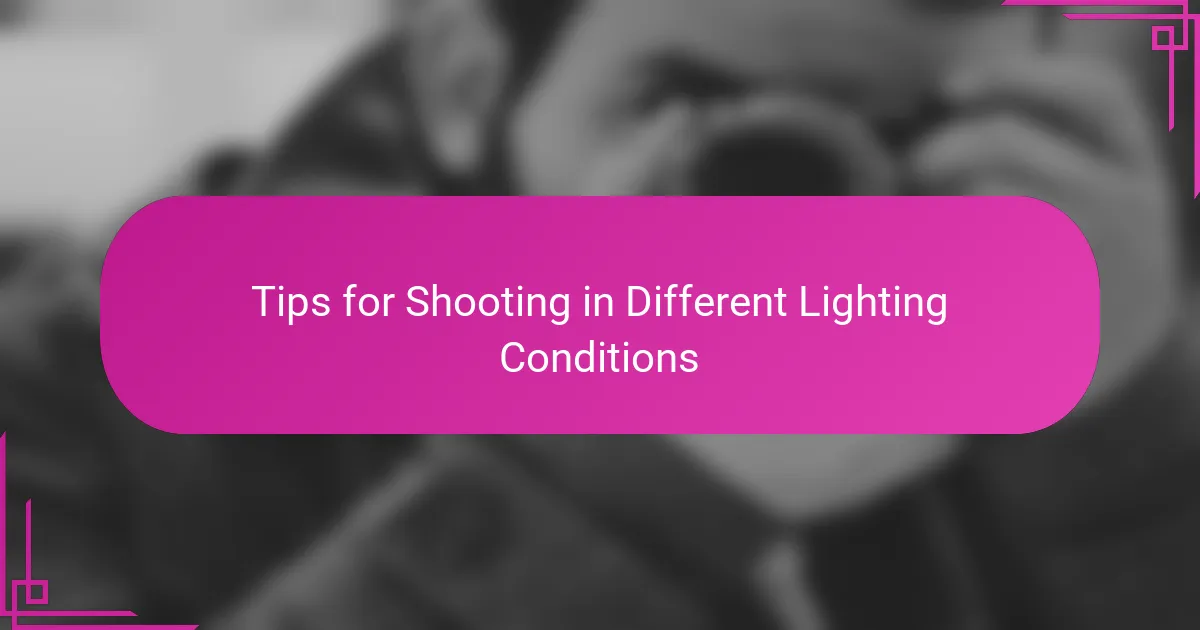
Tips for Shooting in Different Lighting Conditions
Light in Joshua Tree is constantly shifting, and adapting to these changes is key. Have you ever started shooting under a bright midday sun only to be overwhelmed by harsh shadows and blown-out highlights? I’ve been there, and switching to shooting in the softer light of early morning or late afternoon often saves my images from looking flat or too contrasty.
When the desert is cloaked in strong sunlight, I like to use polarizing filters to reduce glare and deepen the blue of the sky. It’s a small adjustment, but it makes a big difference in bringing out Joshua Tree’s vivid colors. Also, I try to underexpose slightly to preserve details in bright areas—this has saved me more than once from losing texture in the rocks and sand.
Then there are those magical cloudy days when diffuse light softens everything. Instead of fighting the overcast, I embrace it by focusing on subtle tones and textures that usually get lost in direct light. Do you remember a time when gray skies actually made your landscape feel more intimate? For me, these conditions reveal a quieter side of Joshua Tree that often feels more emotional and layered.

Personal Workflow for Joshua Tree Sessions
My workflow in Joshua Tree usually begins by arriving early and taking a slow walk through the area I want to shoot. Have you ever noticed how the desert feels completely different in those quiet first light moments? This walk not only helps me find compelling angles but also lets me connect with the landscape, which shapes how I compose each shot.
I rely heavily on setting up my tripod precisely and double-checking my camera settings before the light changes. Sometimes, I catch myself rushing, only to realize I missed a subtle shift in color or shadow; patience here is everything. I’ve learned that being methodical—checking exposure, focusing carefully, and experimenting with framing—turns fleeting moments into lasting images.
Towards the end of a session, I usually review my shots on the spot to adjust for any details I might have missed. Have you ever discovered that one image on your camera screen that stops you in your tracks? That instant feedback feeds my creativity and often inspires me to explore new perspectives before packing up. It’s a cycle of observing, shooting, reflecting, and adapting that keeps my Joshua Tree sessions productive and endlessly inspiring.